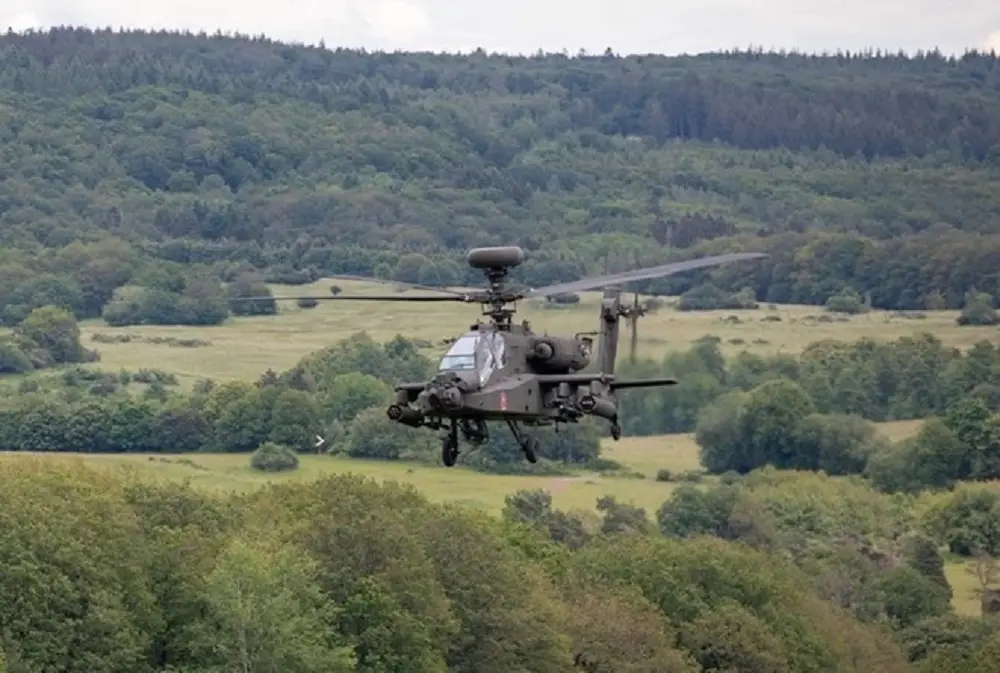Lockheed Martin (NYSE: LMT) has received a contract from the Apache Attack Helicopter Project Management Office (with the Apache Sensors Product Office having responsibility for the management of the program) to develop the Gen 3 Radar Frequency Interferometer (RFI) / Radar Warning Receiver (RWR) APR-48B system for the U.S. Army’s Apache attack helicopter fleet. The Gen 3 RFI system will provide significant capability enhancements that are enabled by advanced microelectronics. This development effort is the next step in Lockheed Martin’s 30+ year history of successfully developing and producing the Gen 1 RFI and Gen 2 RFI systems for Apache. The Gen 3 RFI system will build on technology developed as a result of Lockheed Martin’s ongoing collaboration with Intel (NYSE: INTC), Altera, an Intel Company, Booz Allen Hamilton, and the Office of the Under Secretary of Defense for Research and Engineering (OUSD R&E) under the Trusted and Assured Microelectronics (T&AM) program’s Stimulating Transition for Advanced Microelectronics Packaging (STAMP) and State-of-the-Art Heterogeneous Integration Packaging (SHIP) projects. Through the SHIP project, Intel’s Altera developed a Multi-Chip Package (MCP-2) that can be tailored to different functions to modernize mission-critical Department of Defense (DoD) systems. Through STAMP, Lockheed Martin and Altera optimized architectures that leveraged the MCP-2 microchip for electronic warfare applications, accelerating the transition of capabilities to the warfighter.
Lockheed Martin has used its 50 years of electronic warfare expertise, coupled with investments in state-of-the-art microelectronics and modern software capabilities, to architect the Gen 3 RFI system and provide optimized advanced capabilities. In collaboration with the Apache Program Office, Lockheed Martin will be able provide a significantly improved sensor performance in a smaller, lighter package providing the ability to add additional functionality into the Gen 3 for the Apache. Through this upgrade, Lockheed Martin will complete the development, build, and qualification of the Gen 3 RFI system, with the long-term plan to replace all currently fielded Gen 2 systems and integrate the Gen 3 system on all Apache aircraft. A key enabler for this effort is the use of the MCP-2 microchip, which is the catalyst for the full-system technology upgrade, making it smaller, lighter, and more powerful than the legacy Gen 2 system. Significantly, this is also the first time that Radio Frequency System on a Chip (RFSOC) is being used in the APR-48B electronic warfare system, demonstrating Lockheed Martin’s commitment to furthering electronic warfare microchip capabilities and advancements.
OUSD(R&E)’s T&AM program supports DoD microelectronics modernization leveraging state-of-the-art, commercially driven technologies. By leveraging commercially-driven technology and partnerships, supply chain integrity and U.S.-based capabilities, T&AM is accelerating the delivery of best-of-breed solutions for the warfighter.
Throughout the next several years, Lockheed Martin will partner with the Apache Attack Helicopter Project Management Office to implement, design, test, produce and deliver the Gen 3 RFI System. To obtain full capability, it is crucially important to combine microelectronics with Lockheed Martin’s expertise in proven system architecture, which allows delivery of electromagnetic spectrum capabilities in smaller and less expensive packages. With over 50 years of airborne electronic warfare experience, Lockheed Martin is strategically positioned to continue developing microelectronic technologies.















